In our imagery, we should strive to show an authentic UMBC experience that gives our audience a true sense of place and community. All photography and illustration should be developed considering our inclusive culture, innovative teaching and learning, research across disciplines, and civic engagement. We should show, as much as possible, subjects with the people who support them in engaging ways. Whenever possible, black and gold should be prominently captured in photography and applied to illustrations and design. The use of those colors will ensure that the imagery has the look and feel of UMBC.
Finding and Requesting Photography
Current Photo Archives
Brand and Creative Strategy maintains a photo archive, a database containing thousands of photos. For help with specific requests or to request access to existing UMBC photos, contact Jim Lord ’99, the AVP of Brand and Creative Strategy. If you use our resources, please consult with Brand & Creative Strategy for the appropriate credit attribution.
Historic Photos
Other sources of photos include Special Collections, an archive maintained by the Albin O. Kuhn Library. The archive includes photos taken from 1966 to the present, many of which can be previewed online. Special Collections staff can also sometimes supply higher-quality versions of these photos.
Portrait Requests
Research Graphics, a CNMS core facility, has established portraits.umbc.edu to provide consistent, professional-quality headshots to all UMBC faculty and staff. They encourage all faculty and staff to participate in order to provide consistent images for department, program, and office websites. Photos can also be used for university communications needs, such as sending to media that feature faculty and staff experts.
Freelance Photographers
When Creative Services does not have the capacity to accommodate a specific request, please refer to the Freelance Photographer list.
Photo Releases
It is important to collect photo releases and subject permissions whenever possible, especially when using photos in paid marketing and advertising. When using images of community members, creators should also be mindful to seek updated permissions, in particular for photos taken in non-public spaces, or when photos are used to illustrate topics that are sensitive or that the subject may not be affiliated with.
Event Photography
When documenting events, photographers should work with the client to develop a shot list for any VIP attendees or moments, and photographers should strive to show a range of speakers, details, candid mingling, and posed group photos. When utilizing photos from events, it’s important to be mindful of our photo release and use policies. Attendees should in some way be made aware that photography for the university is happening, and have the opportunity to notify photographers that they do not wish to be photographed. When using photos from events in projects, publications, and marketing in the future, it is important to remember that these photos are likely not released (and therefore any specific framing on certain subjects should be avoided in paid advertising). More broad/general photos can be used to tell the story of the event when being used in materials beyond archival documentation (and distribution to guests themselves if applicable). Annual events, such as Homecoming, may also serve as good opportunities to stage photoshoots with released subjects.
Weaving the Brand into Image Selections
As you work to weave the UMBC brand into messaging, you should do the same with imagery. Use the guides below to think about ways of incorporating powerful, theme-driven images into your work.
Reach Together, Claim Your Future, Explore Every Angle, and Extend Beyond represents the heart of UMBC’s brand, and each of these can and should be applied to our photography.
Our photography should:
- Show our collaborative culture and big breakthroughs when asking important questions
- Portray the grit – hard work, courage, and commitment – that our students use to go beyond simply checking boxes, and to instead gain more from their college experience and unlock amazing networks and careers
- Highlight the way our inclusive community values all perspectives and experiences through an environment of openness, constant learning, and lasting relationships.
- Feature images that show a diversity of fields, student collaboration, professor-to-student relationships, and hands-on, experiential learning.
- Display the far-reaching impact of our community through partnerships, research, internships, athletic competition, careers, and more than advance knowledge, economic prosperity, civic engagement, and social justice close to home and around the world.
- Illustrate the beauty of UMBC’s campus, and the surrounding areas (Baltimore, Washington, D.C., Annapolis, and nearby employers) which are also part of our UMBC
Below is a sample of images:

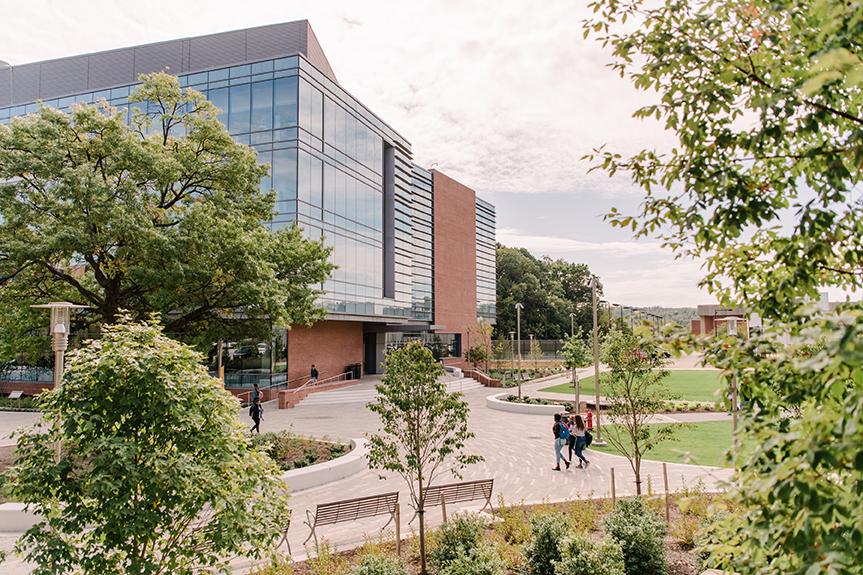
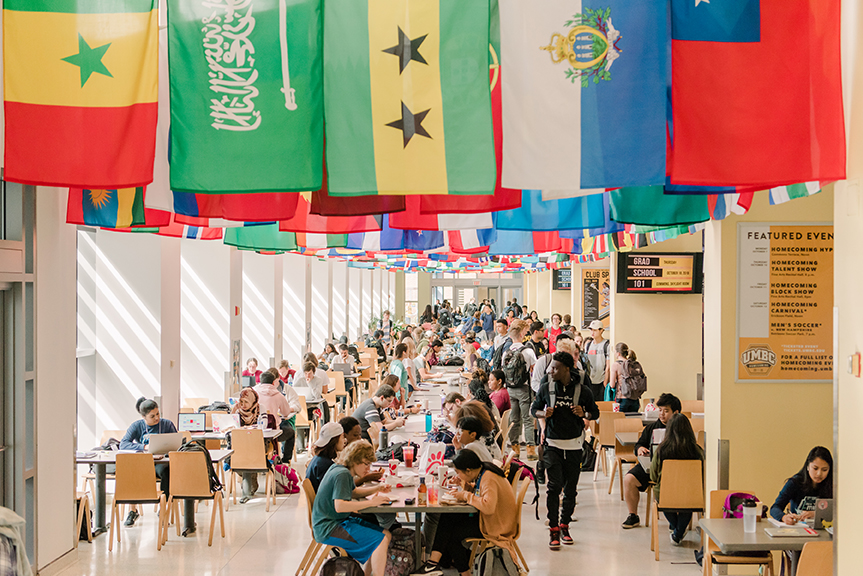
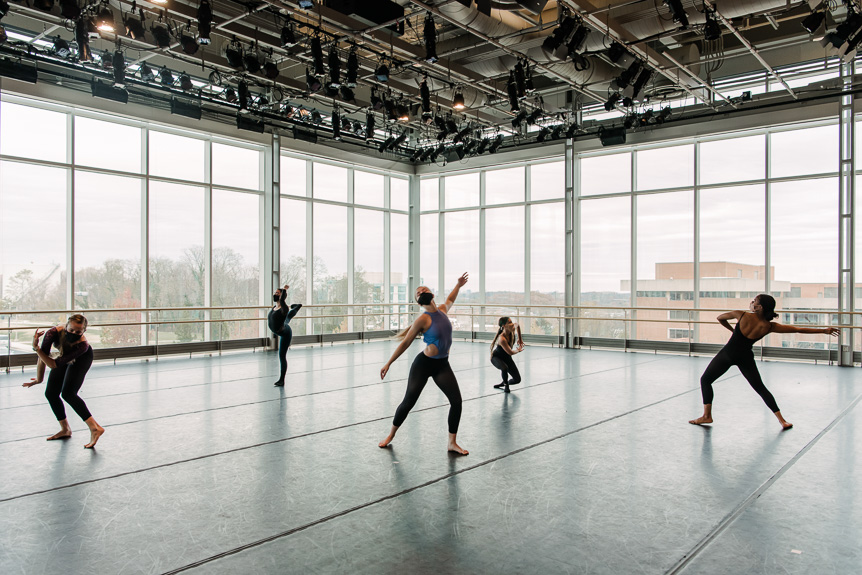
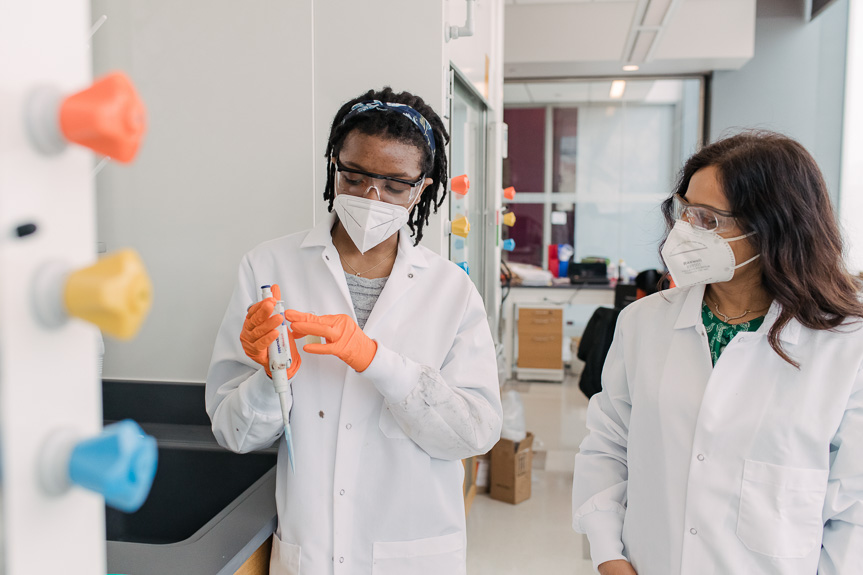
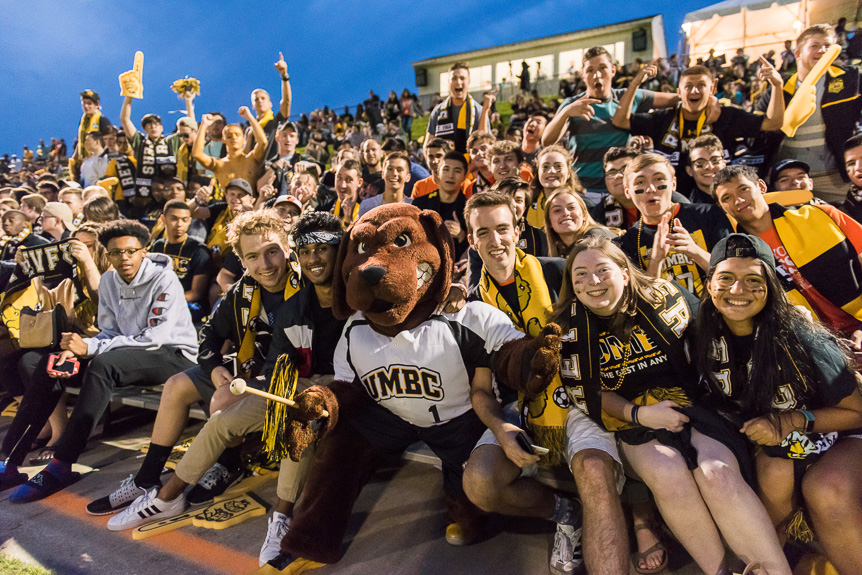
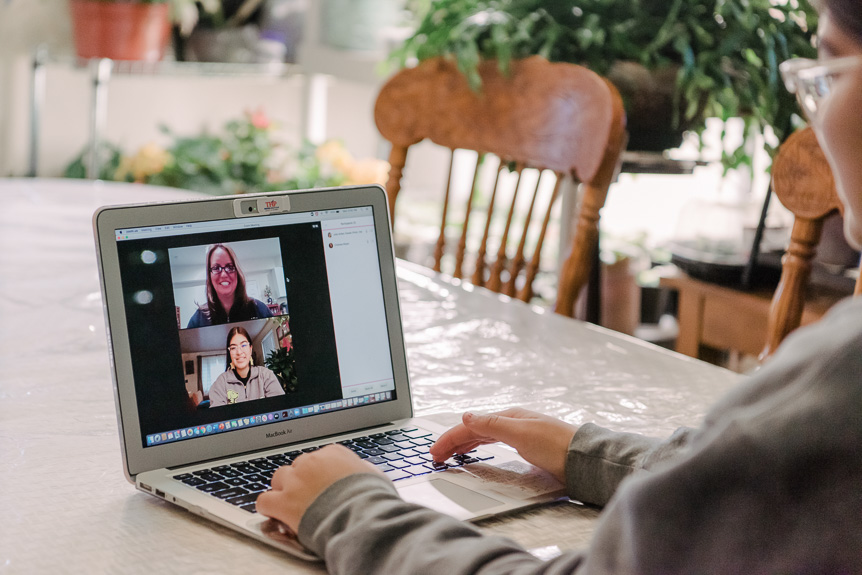
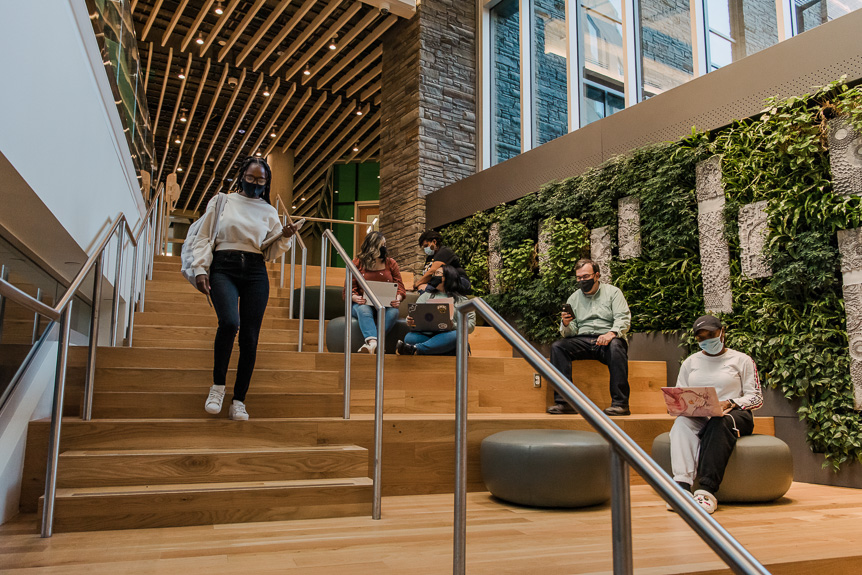

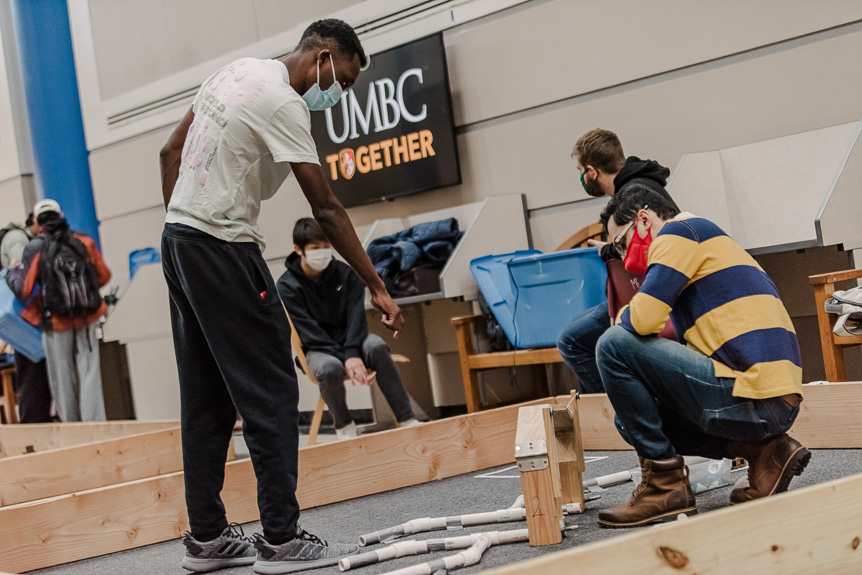
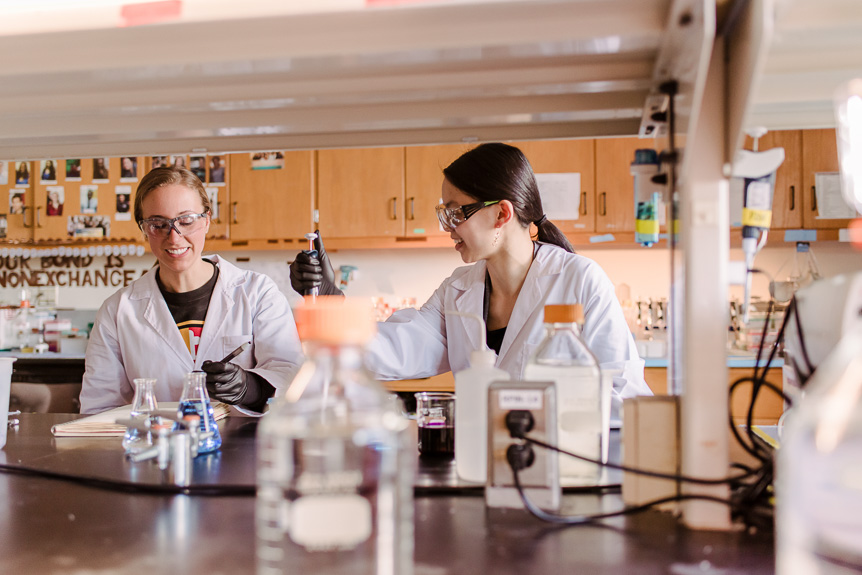
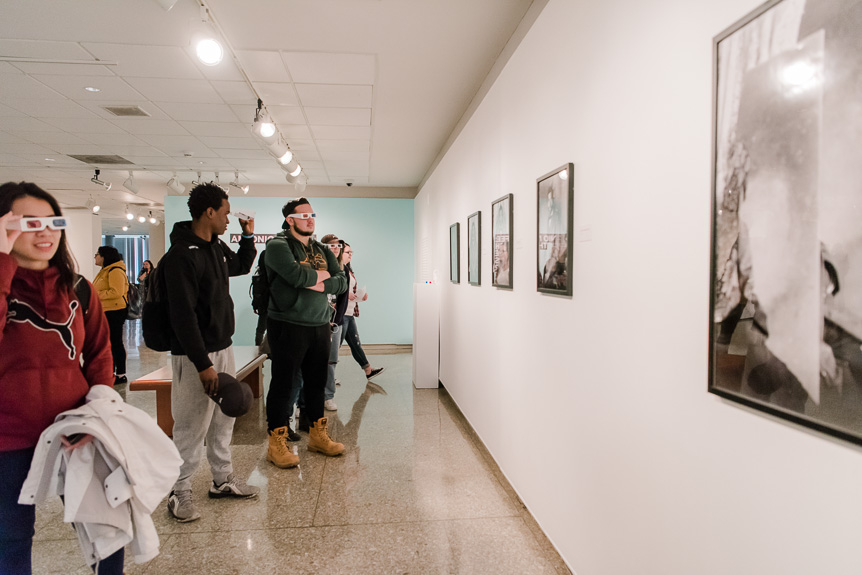
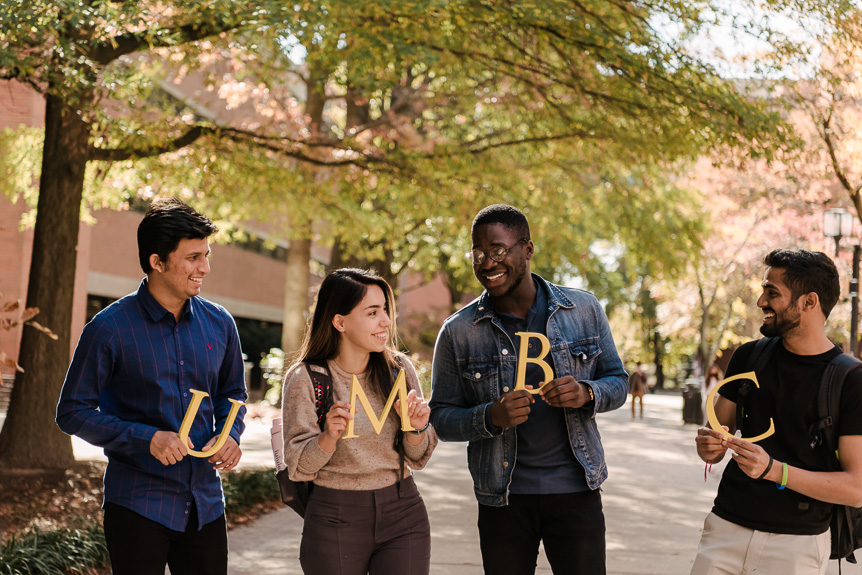
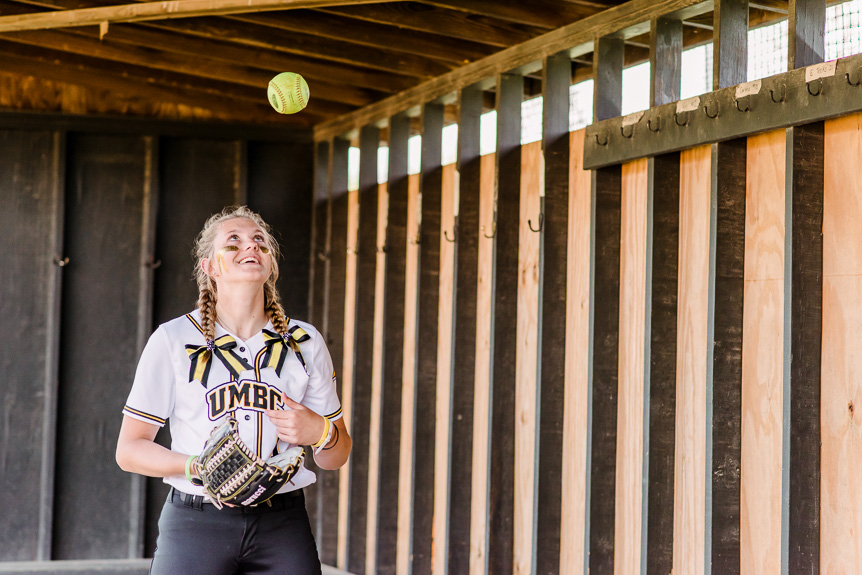
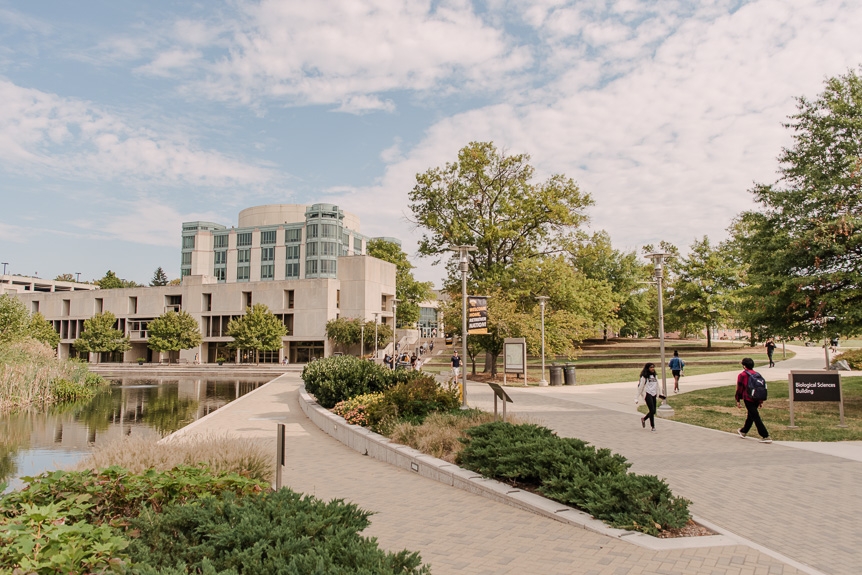
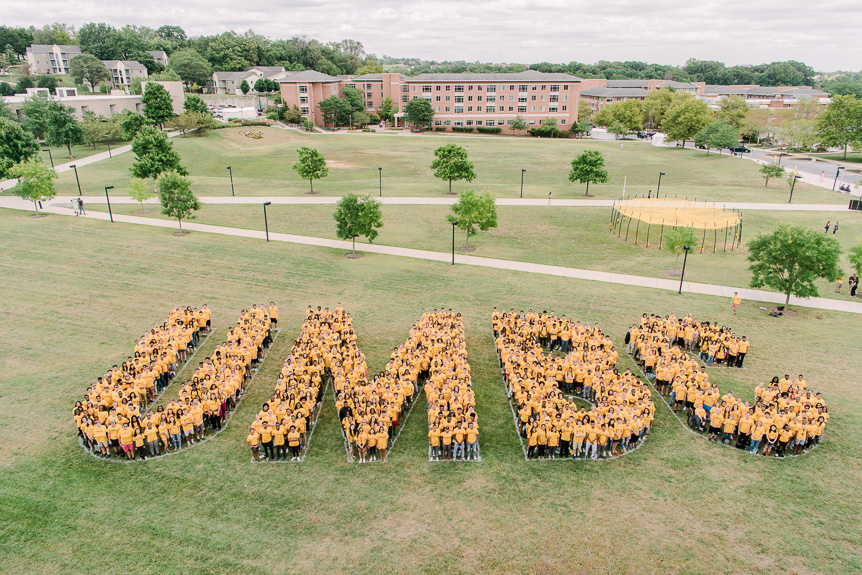
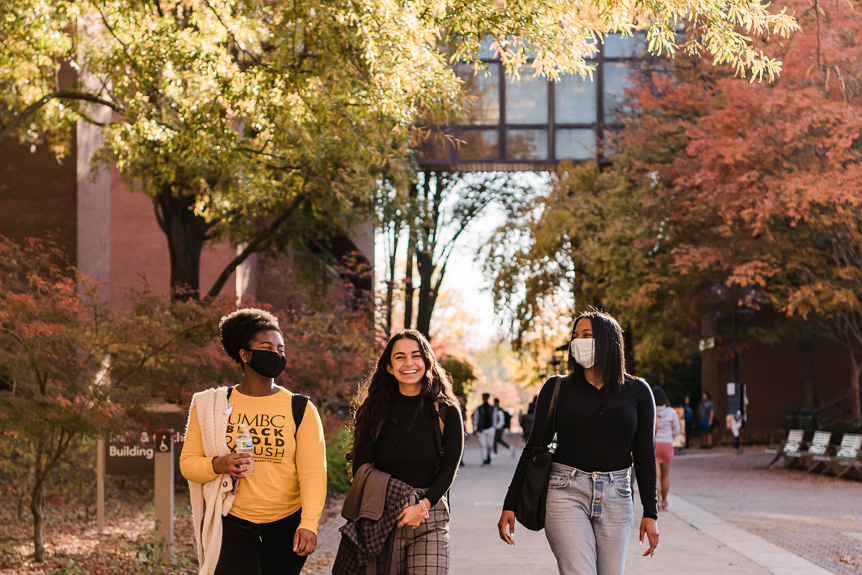
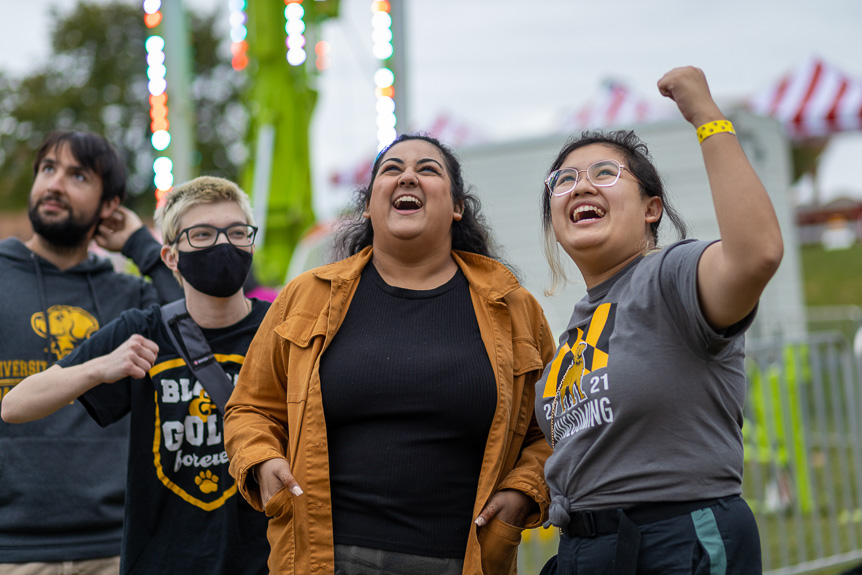
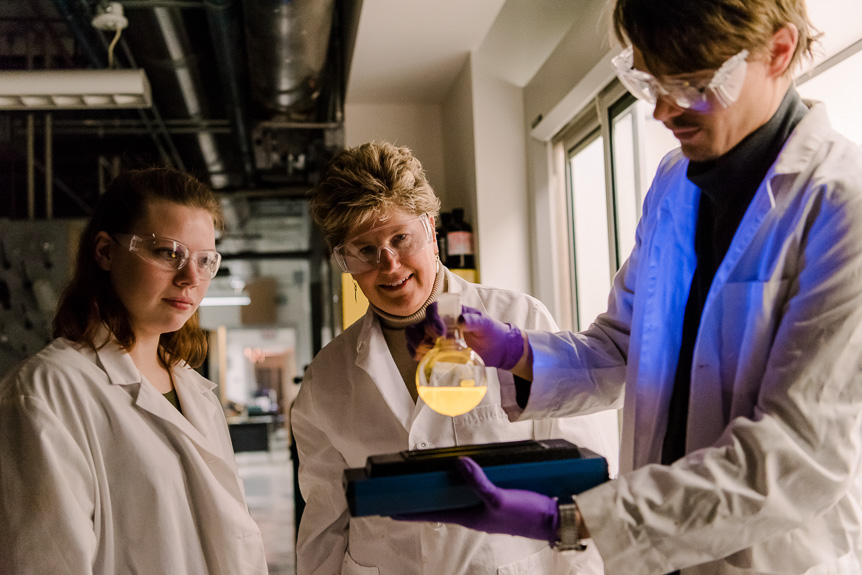
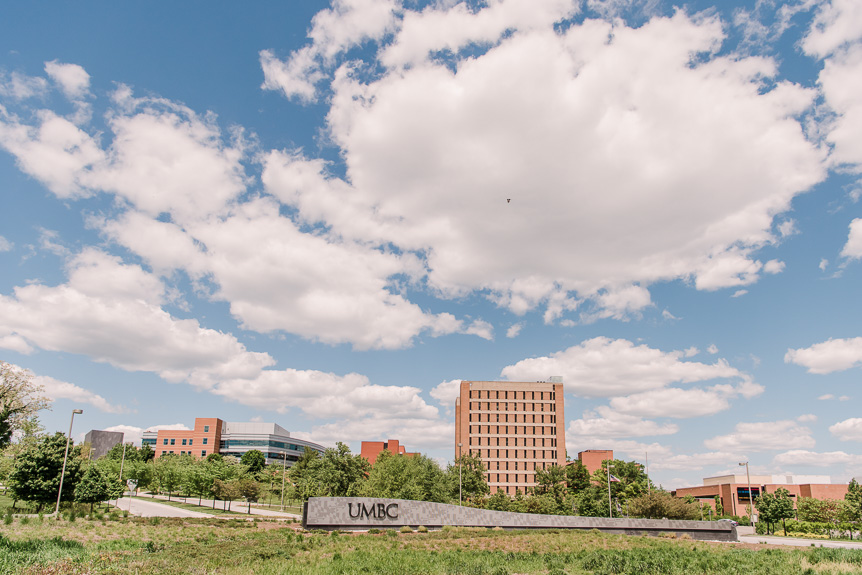
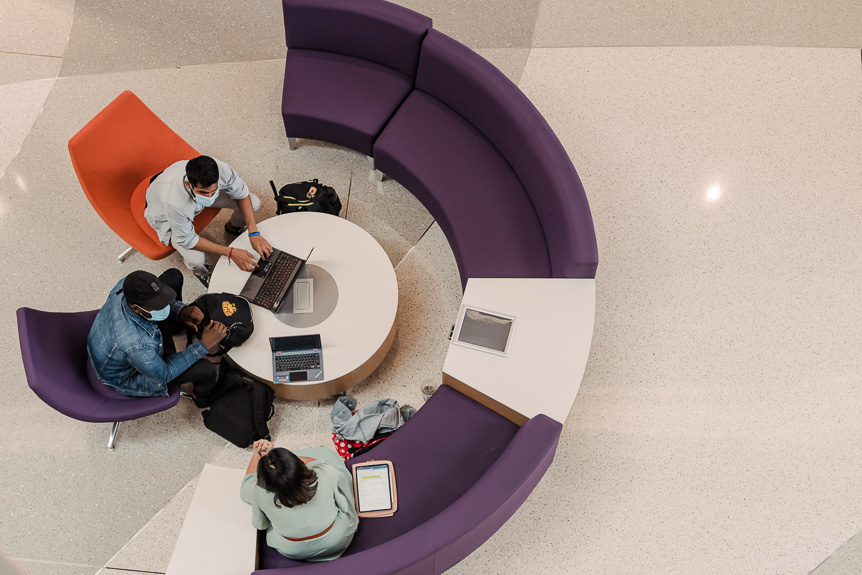
For a more extensive review of our brand pillars, see here
A Global Experience
Universities are inherently international institutions of scholarship and knowledge that we all share, and UMBC is no exception. We have undergraduate and graduate students from over 100 countries. Our faculty includes scholars from distinguished universities all over the world. Our growing international curriculum prepares our students for a rapidly changing and increasingly interdependent world. It is important to be mindful of this global experience and perspective when creating and selecting imagery.
When creating visual materials with our global community in mind, we should be mindful of how to best reflect and resonate with our audiences. Our materials should focus more on actual campus life and studies, and avoid using images of our mascot too heavily. Additionally, if we are creating materials that represent specific identities, or even international students, faculty, or staff as a whole, we should make sure we are verifying and using photos of our real international community members; and we will ensure the true diversity that exists internationally, avoiding overrepresentation of any one group. Finally, similar to our guidance on portraying anyone in our community as a representative of a certain topic or theme, we should be checking with subjects to make sure we are accurately representing them in a global and international context too.
Portraits with Personality
While we aim to show the collaboration and support that is reflective of the UMBC experience, at times we will need to highlight individuals for particular stories and achievements. It’s best to approach these in a way that goes beyond a simple headshot. Ideally, there might be at least one other supporting community member in the photos, but even when focusing on an individual we can set the tone with a specific mood or illustrate the subject’s personality. Showing various angles, or photographing people in spaces that are relevant to their work – and, when appropriate, doing that work – are all ways to elevate the style of our portraits. It’s also important to consider the context of the photo. Even if we are unable to show a diverse group of our community in one photo, a photo of an individual may appear in a publication or website that does feature a more representative and collaborative portrayal of our UMBC community.
Illustrative Storytelling
Consider how illustration and design elements can work together with photography to tell UMBC stories in an engaging and modern way. Contemporary illustration can be used to guide a viewer through the piece, better emphasize brand elements, and more. . Utilize student, alumni, and local talent whenever possible, and use this branding guide with them as a way of helping them incorporate the brand into their work. Remember that seeking out talent from a diverse set of backgrounds will best represent our inclusive community.
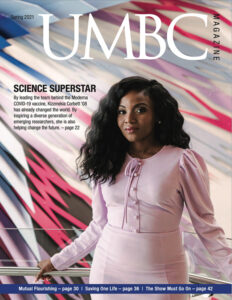
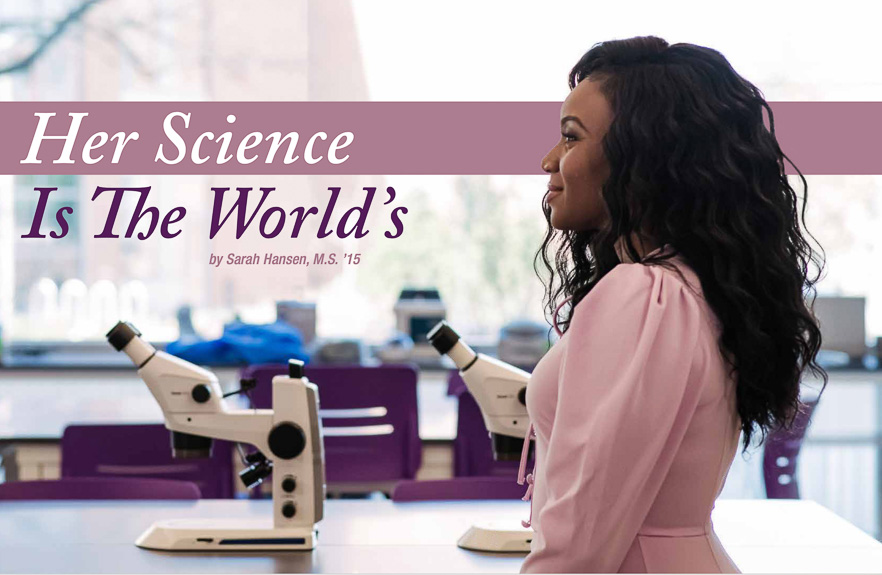
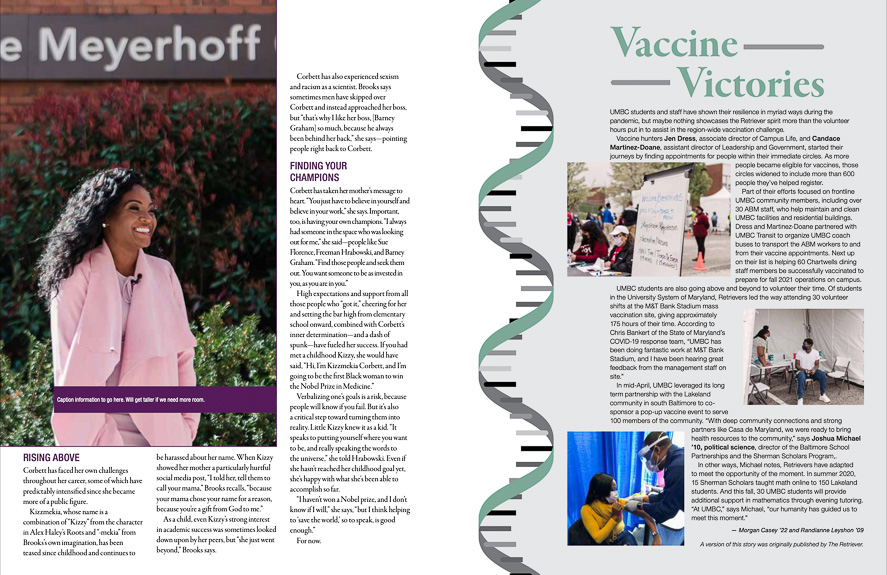
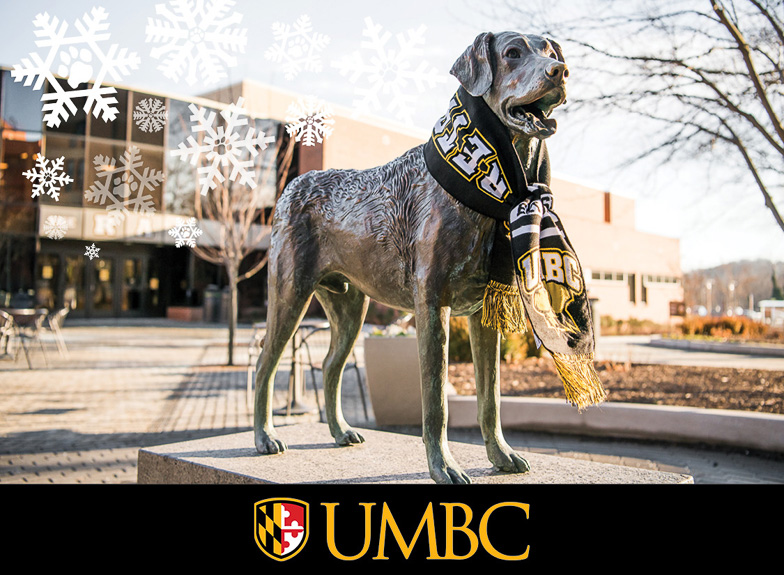
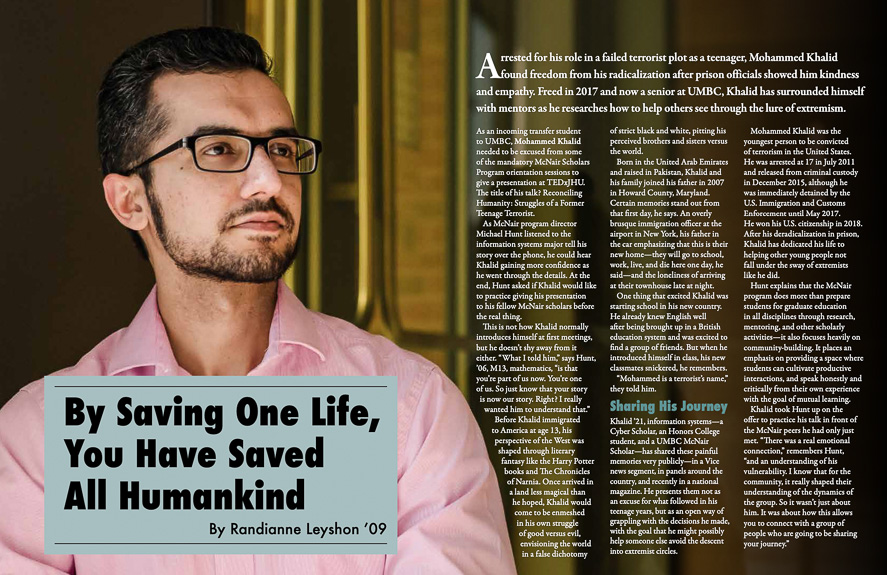
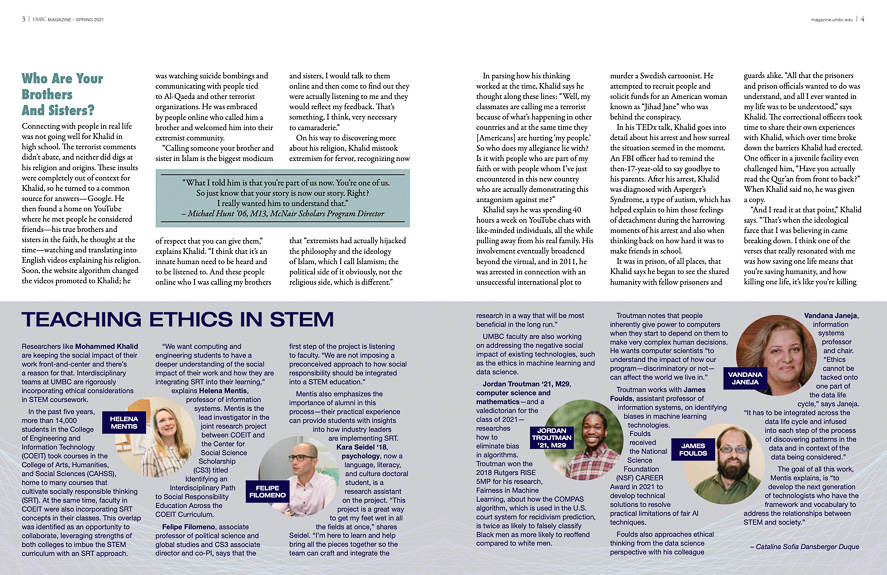
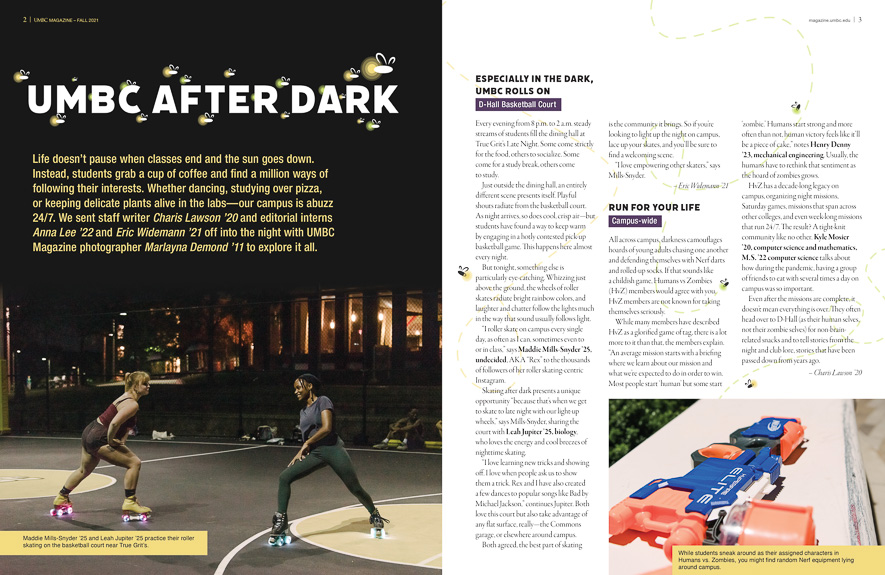

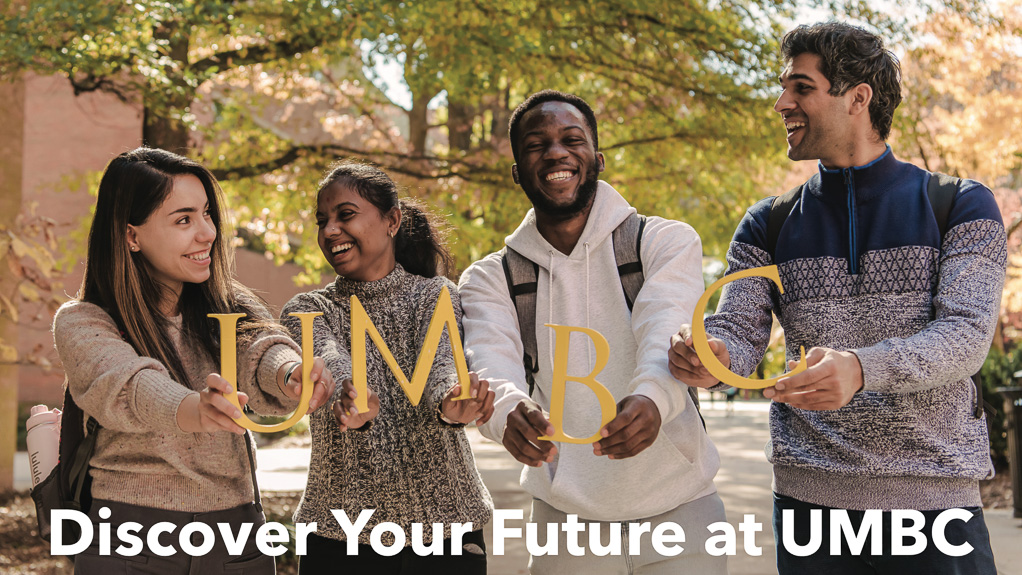
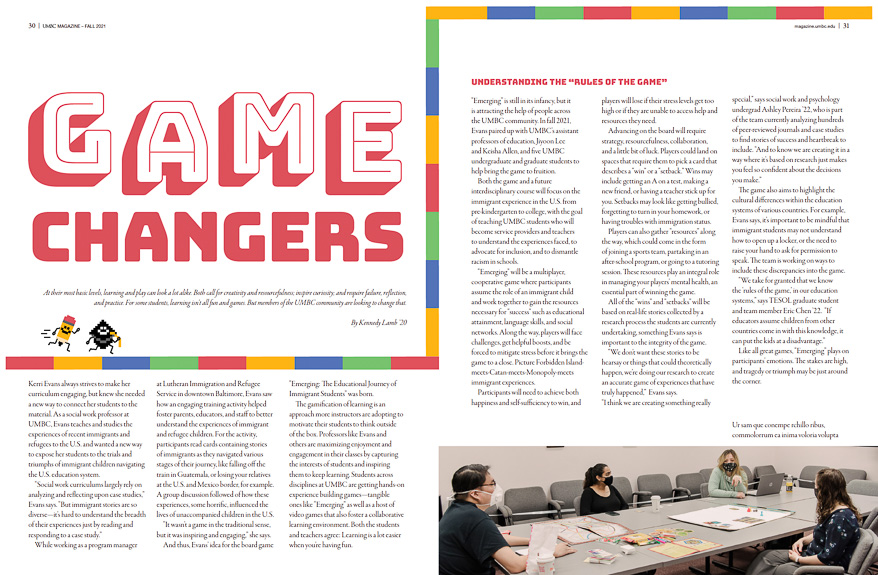
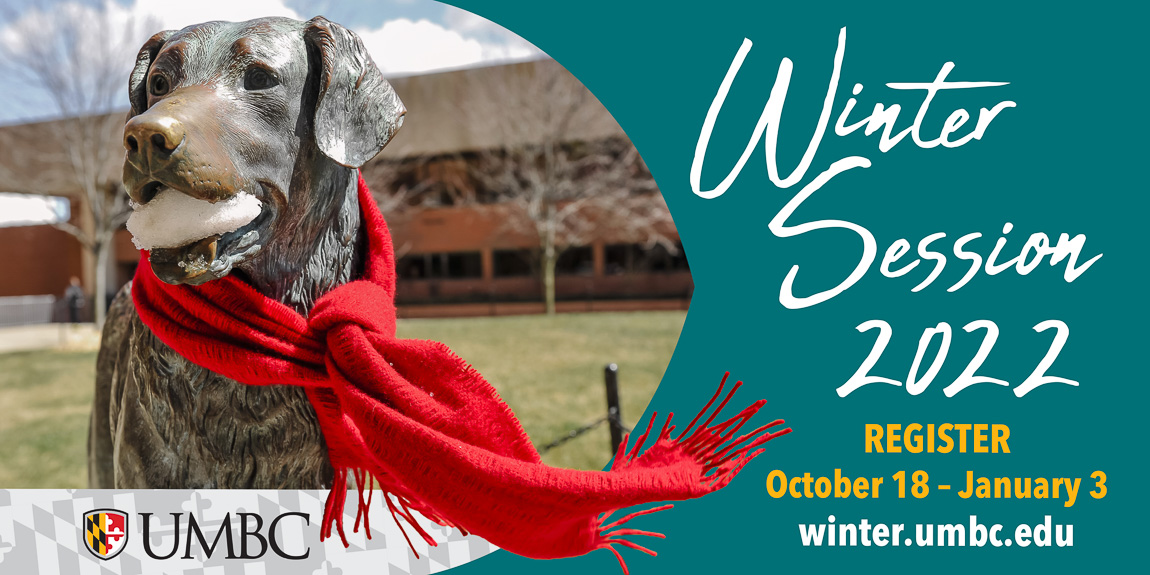
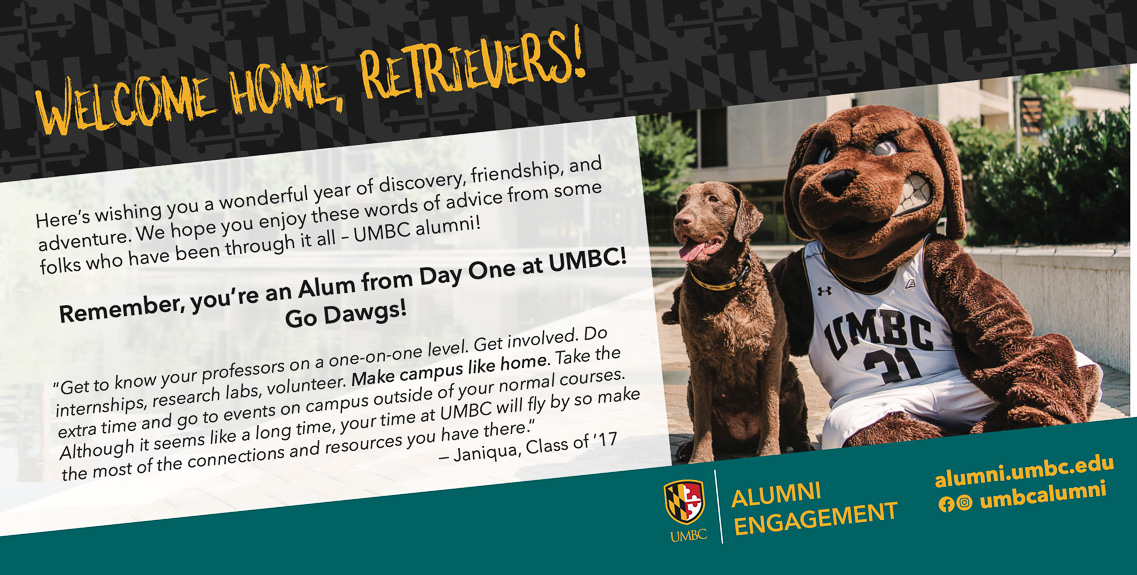
Editing Styles
In keeping with the UMBC brand and styles, our editing should be consistent and primarily as true to life as possible. UMBC’s editing style should reflect natural and inviting colors and lighting. When receiving submitted photos from our community or, in ideally rare cases from stock photography sources, slight retouching is okay and sometimes necessary to better match consistency and to optimize images for printing and web. In general, we aim for realistic but polished editing. If requested to use editing that removes subjects from the scene or implements more stylized effects, we should be considerate that new illustrations or designs do not stray from the original intent of use that the subject agreed to without seeking additional consent.
Portraying a Safe and Health-Conscious Campus
While UMBC continues to implement public safety measures to keep our community members healthy, especially during the Covid-19 pandemic, it is important to reflect this in our imagery and/or descriptions of our photos. Any current strategies and policies like masking and social distancing, or only showing maskless interactions while outside, etc. should be reflected in current photography. When using archival imagery, it’s ideal to make note, when possible, and if current safety measures are clearly not in place in the photo, that the photography being used is pre-pandemic. For more information about UMBC’s current COVID-19 policies, please see our COVID-19 updates page.
Safety measures have always been an important part of illustrating research on campus as well, especially in labs. Regardless of broad health and safety measures that are locally or globally applicable, it is strongly encouraged that all personal protective equipment (PPE) such as masks when applicable, goggles, gloves, and lab coats be worn when relevant to the field of research being documented. For up-to-date guidance on sharing photos with COVID-19 in mind, please see this page of our social media guide.